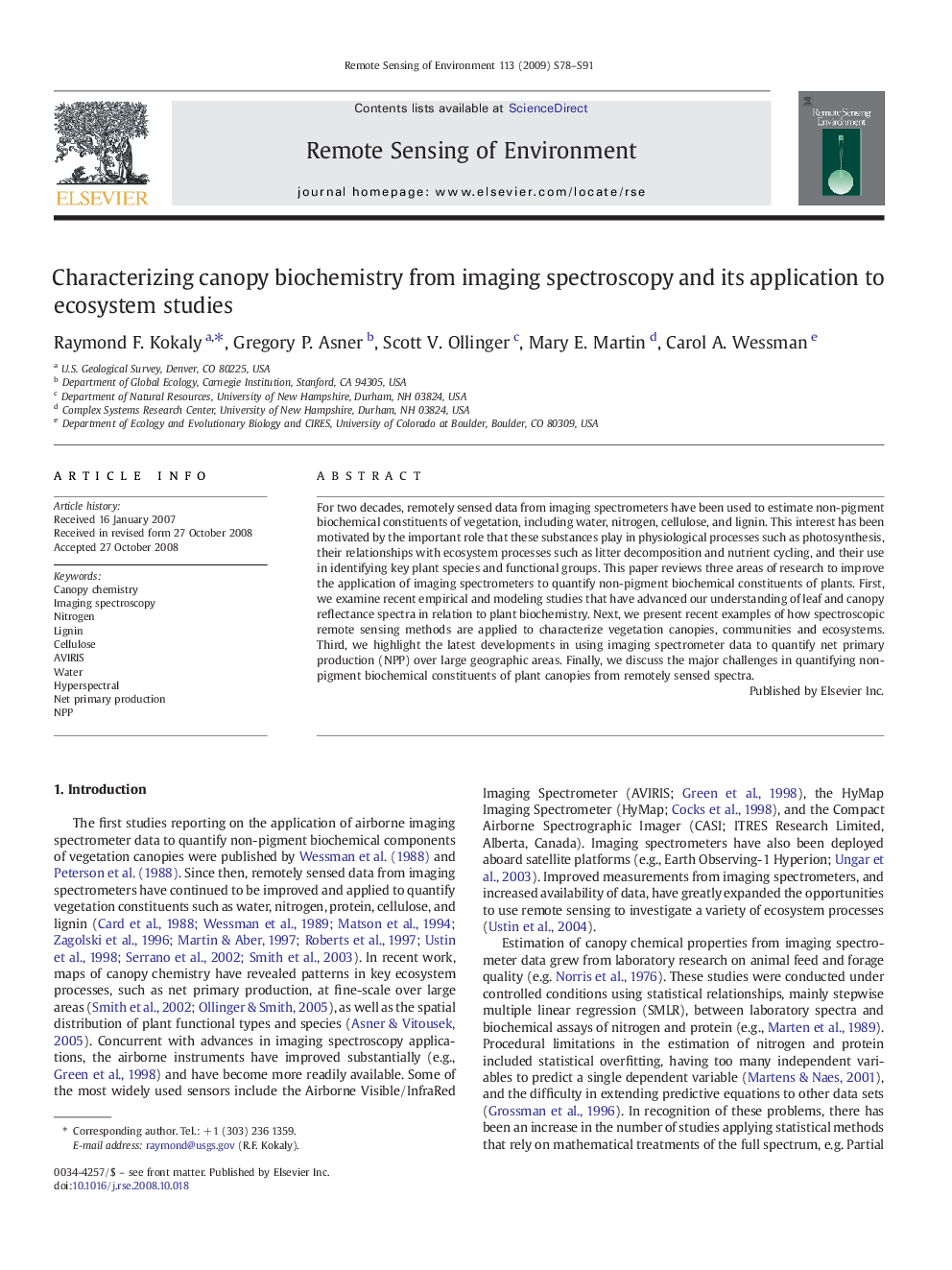| Article ID | Journal | Published Year | Pages | File Type |
|---|---|---|---|---|
| 4460310 | Remote Sensing of Environment | 2009 | 14 Pages |
For two decades, remotely sensed data from imaging spectrometers have been used to estimate non-pigment biochemical constituents of vegetation, including water, nitrogen, cellulose, and lignin. This interest has been motivated by the important role that these substances play in physiological processes such as photosynthesis, their relationships with ecosystem processes such as litter decomposition and nutrient cycling, and their use in identifying key plant species and functional groups. This paper reviews three areas of research to improve the application of imaging spectrometers to quantify non-pigment biochemical constituents of plants. First, we examine recent empirical and modeling studies that have advanced our understanding of leaf and canopy reflectance spectra in relation to plant biochemistry. Next, we present recent examples of how spectroscopic remote sensing methods are applied to characterize vegetation canopies, communities and ecosystems. Third, we highlight the latest developments in using imaging spectrometer data to quantify net primary production (NPP) over large geographic areas. Finally, we discuss the major challenges in quantifying non-pigment biochemical constituents of plant canopies from remotely sensed spectra.
